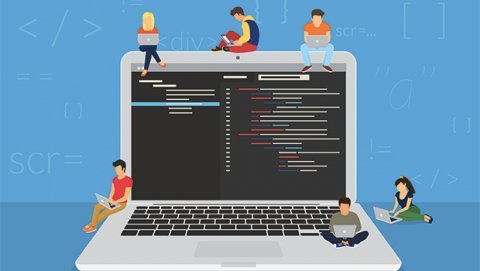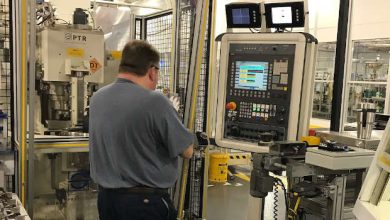Trends And Ways To Improve Emergent Software

Various trends and ways are being used to improve the capabilities of emerging software. These trends are AI, Iterative learning, New languages, and Guild practices. The goal is to create software that can perceive and respond to its environment. But how do these practices improve the capabilities of emerging software? System administrators and other IT professionals are routinely tasked with managing and supporting database environments.
Try to visit these SQL Professionals – EmergentSoftware.net a website to sign up for Emergent Software’s SQL Server Support and Remote DBA consulting services. This is to ensure that some of their team of senior SQL Server experts can have access to your environment and can quickly assist when difficult situations arise. Schedule regular health checks and assistance from them in configuring your database environment with best practices to avoid problems. Let’s explore some of these trends. Here are some examples:
Guild practices develop emergent qualities
While teams and organizations are often organized around a specific project or technology, guilds are communities of practice that extend across different tribes. Unlike teams and organizations, which tend to have leaders and coordinators, guilds are self-managing groups that can refactor goals and structure as they go. While this method has its own inherent dependencies, it is important for the continued development of emergent software.
Iterative learning
The concept of emergent learning has its roots in the scientific discovery of new species. It is an approach to software design that involves an unsupervised online system that continuously explores a variety of alternative system assemblies to find the optimal solution to a problem. It is also applicable to a wide variety of other disciplines, including new software development. The main characteristic of emergent software is its capacity for self-organization.
Artificial Intelligence
There are many ways in which AI can improve emerging software development. AI is a powerful new tool that can automatically identify gaps in existing technologies, fix bugs, and improve processes. Developers can also leverage AI to improve the quality of their code and free up their time for more complex work. Currently, AI is a few years away from replacing human developers, but it is already making waves in many fields. AI will revolutionize software development by reducing the time to produce new products and services.
New languages
The programming languages of the 21st century have radically changed. Instead of Java, C++, and C#, today’s developers use languages that focus on debugging, efficiency, and memory management. These languages are designed for complex code and differ in style and capabilities. Some have been around for years, while others are just now making their way to the mainstream.
IoT
IoT analytics has found that cloud platforms are a clear leader in the IoT platform race, though edge platforms in the industrial space remain in their infancy. Virtualization technologies have made applications more portable across compute hardware vendors, but many OT departments still purchase boxes for running their applications. Despite the benefits of virtualization, edge platforms are only in their infancy, but there are a number of trends to watch in the coming years.
Blockchain
Using a framework to map innovations against contextual dimensions can help executives understand the challenges and opportunities of the blockchain. By identifying the different stages of innovation, executives can better understand what infrastructure they need to adopt the technology. A framework is a useful tool for managers to assess the state of blockchain development in any industry and plan strategic investments in blockchain capabilities. This article provides an overview of key aspects of the framework.
Blockchain-based transaction recording
Blockchain technology is an immutable record of transactions. Blockchains can be used for several purposes, including recording election votes, product inventories, state identifications, deeds to homes, etc. The immutability of blockchains makes it difficult to manipulate data. As a result, tens of thousands of projects are now implementing blockchains. Blockchains can help make supply chains much easier to track, as they involve massive amounts of data. Blockchain-based systems are now being used in food tracking, including IBM’s Food Trust project.
For more valuable information visit this website





Thanks for sharing. I read many of your blog posts, cool, your blog is very good. https://www.binance.com/bg/join?ref=FIHEGIZ8
Thank you for your sharing. I am worried that I lack creative ideas. It is your article that makes me full of hope. Thank you. But, I have a question, can you help me? https://accounts.binance.com/pl/register-person?ref=JHQQKNKN
I don’t think the title of your article matches the content lol. Just kidding, mainly because I had some doubts after reading the article.
You actually make it seem really easy along with your presentation however I find
this topic to be actually something which I think I’d by no means
understand. It kind of feels too complex and very extensive for me.
I’m looking ahead in your next publish, I will try to get the hold of it!
Escape rooms hub
Hello very nice website!! Man .. Beautiful ..
Superb .. I will bookmark your blog and take the feeds also?
I am glad to search out numerous helpful info right here
within the put up, we want develop extra strategies in this regard, thank you for sharing.
. . . . .
This is a topic that’s close to my heart… Best wishes! Exactly where can I find the contact details for questions?
Greetings! Very useful advice within this post! It is the little changes that will make the greatest changes. Thanks for sharing!
This is the perfect webpage for anyone who really wants to find out about this topic. You understand a whole lot its almost hard to argue with you (not that I really would want to…HaHa). You certainly put a new spin on a topic which has been written about for a long time. Great stuff, just wonderful.
Everything is very open with a really clear description of the issues. It was definitely informative. Your site is useful. Thanks for sharing!